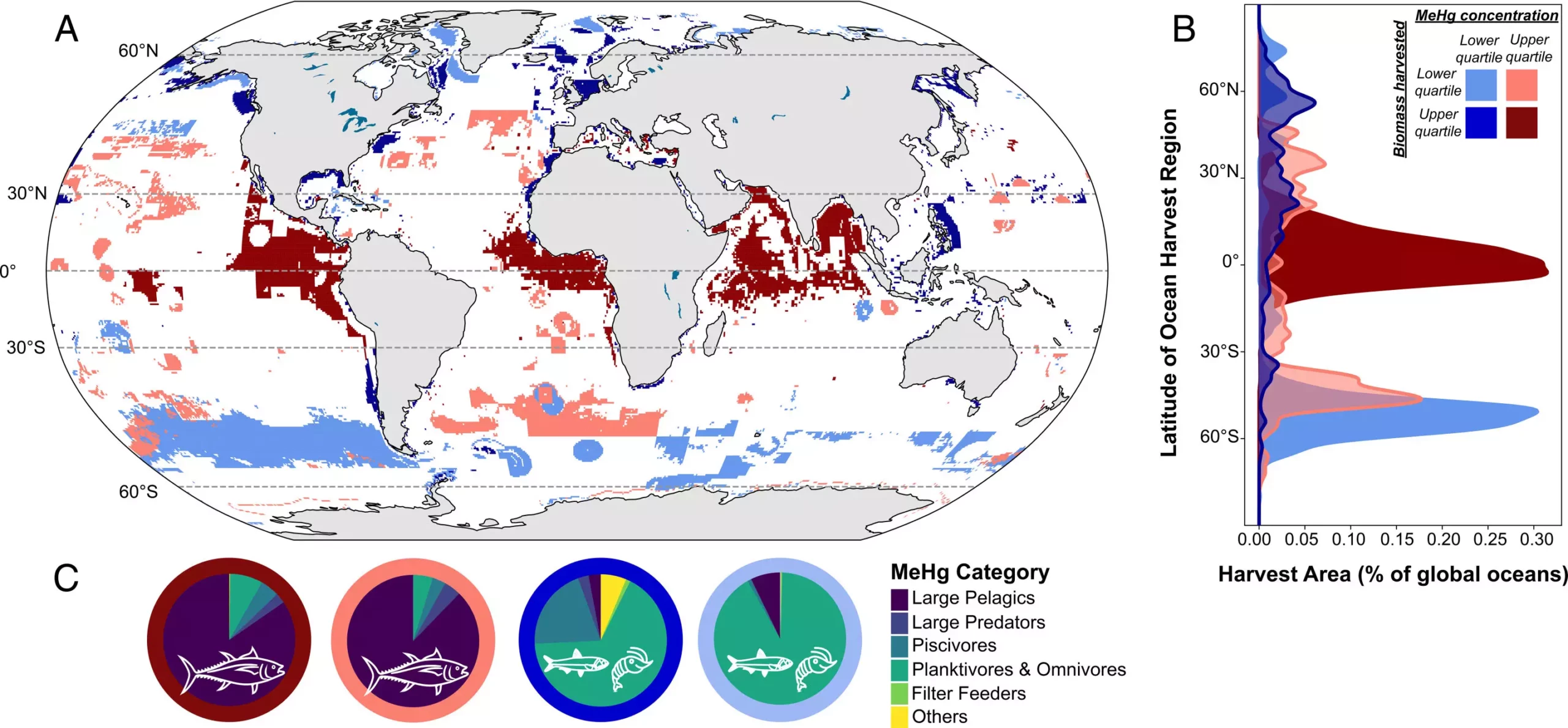The realm of industrial fishing presents troubling challenges that extend beyond mere resource management. Recent research underscores the alarming link between these practices and increased human exposure to methylmercury, a potent neurotoxin. This article will delve into the findings from notable experts at the Harvard John A. Paulson School of Engineering and Applied Sciences, alongside researchers from the University of Delaware and the University of British Columbia, to elucidate the significant ramifications of industrial fishing on human health and the environment.
The growing demand for large pelagic seafood, particularly tuna, has dramatically reshaped the fishing industry. Since the 1980s, advancements in technologies—such as onboard freezing and fish aggregation devices—have allowed fleets to exploit tropical and subtropical waters more aggressively. These innovations have made tuna more readily available worldwide, transforming it into a staple for many diets. However, this increased accessibility comes at a cost. The influx of tunas into markets coincides with hidden risks; these large fish typically exhibit significantly higher levels of methylmercury compared to smaller species.
Methylmercury, a neurotoxin known for its detrimental effects on brain development and cardiovascular health, predominantly originates from atmospheric mercury released by human activities such as coal-burning and waste incineration. Once in the ocean, mercury is converted to methylmercury by microorganisms, particularly in warmer tropical waters, where tuna thrive. Consequently, as humans consume more of these predators, the risks associated with methylmercury exposure burgeon, raising critical health concerns.
Methylmercury is particularly insidious due to its tendency to biomagnify—an ecological phenomenon where higher trophic levels contain significantly elevated concentrations of toxins compared to their prey. In simpler terms, as smaller fish ingest the toxic chemical, it accumulates in their bodies. When larger fish, such as tunas, consume these smaller fish, they ingest these toxins in even more substantial amounts. The implications of this biochemical process are stark: populations reliant on seafood for nourishment, particularly from these high trophic levels, face greater health risks.
As revealed in the study, the research team employed detailed catch data from global fisheries to map the extent of methylmercury released into the food chain through industrial fishing. The results were sobering: fisheries targeting large pelagic species account for over 70% of methylmercury extracted from the ocean, exacerbating human exposure and raising alarms over consumption patterns.
Societal Impacts: Subsistence Fishing and Public Health
The findings of this research have profound ramifications, particularly for subsistence fishing communities that rely heavily on local seafood for sustenance. The study estimates that a staggering 84% to 99% of these fisheries exceed recommended thresholds for methylmercury exposure. Such alarming statistics highlight an often-overlooked aspect of industrial fishing: marginalized communities that contribute the least to environmental pollution are disproportionately affected by its consequences.
Individuals in these communities consume significantly more fish than the general populace, which exposes them to heightened health risks. The irony is stark—many of these fishermen and their families are not responsible for the pollution that contaminates the ocean’s bounty. As Elsie Sunderland, a senior author of the research, states, these groups “are paying the price for pollution they had no role in emitting.”
Seeking Healthier Alternatives
While the repercussions of industrial fishing on human health are daunting, there are promising alternatives on the horizon. The research emphasizes the advantages of small pelagic fish, such as anchovies, sardines, and herring. These species generally contain lower levels of methylmercury and are richer in beneficial nutrients like omega-3 fatty acids. Transitioning toward these fish could yield substantial health benefits, potentially reducing exposure to harmful toxins while still providing essential nutrients.
It is clear that market dynamics, public health, and ecological sustainability must converge to establish fishing practices that support both human and environmental health. The findings indicate an urgent need for shifts in consumer and industrial behavior regarding seafood choices.
The multifaceted issues surrounding industrial fishing and methylmercury exposure necessitate a comprehensive reevaluation of fishing practices and dietary habits. As research continues to illuminate the hidden dangers linked to large pelagic fish, it becomes imperative for consumers, policymakers, and the fishing industry to explore sustainable alternatives. In doing so, society can work together to mitigate the impacts of pollution on vulnerable communities while promoting a healthier global seafood market.


Leave a Reply